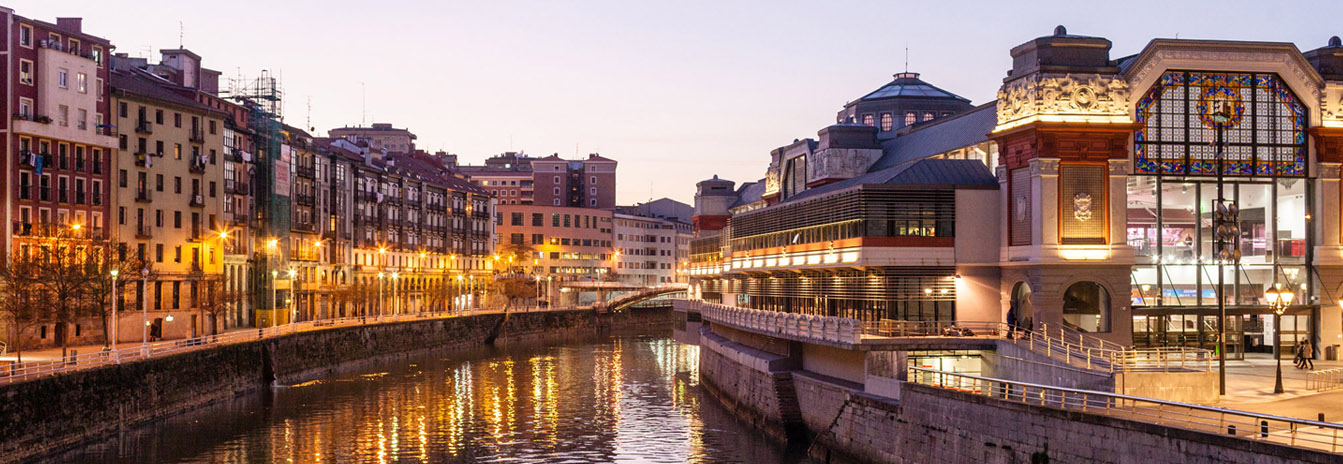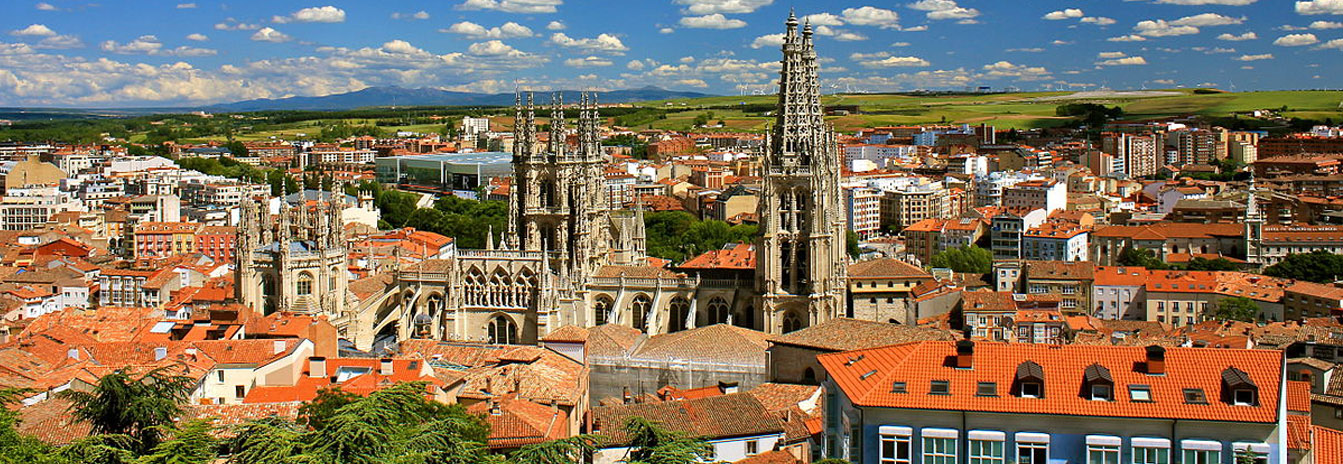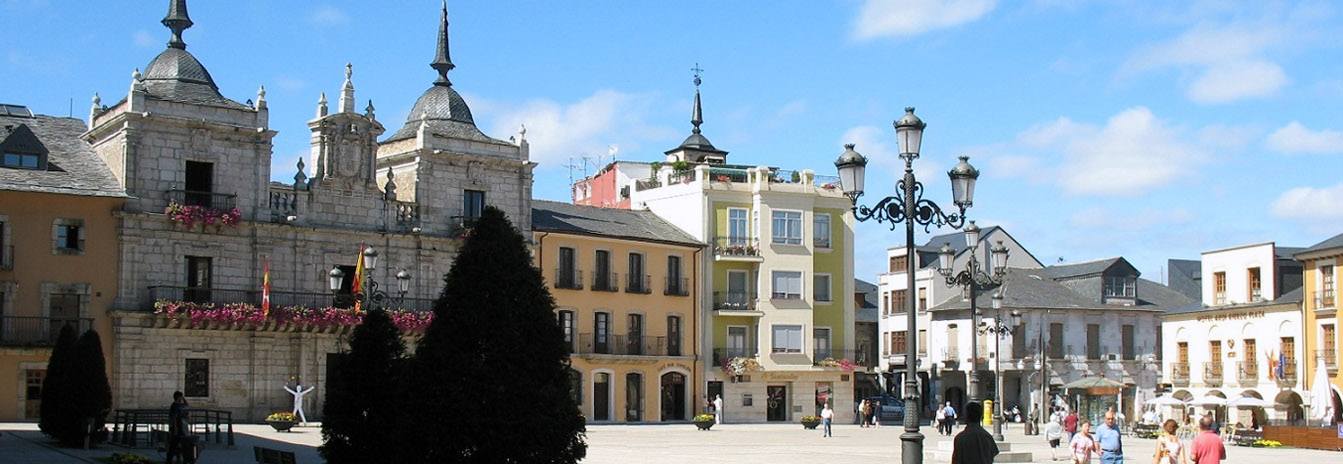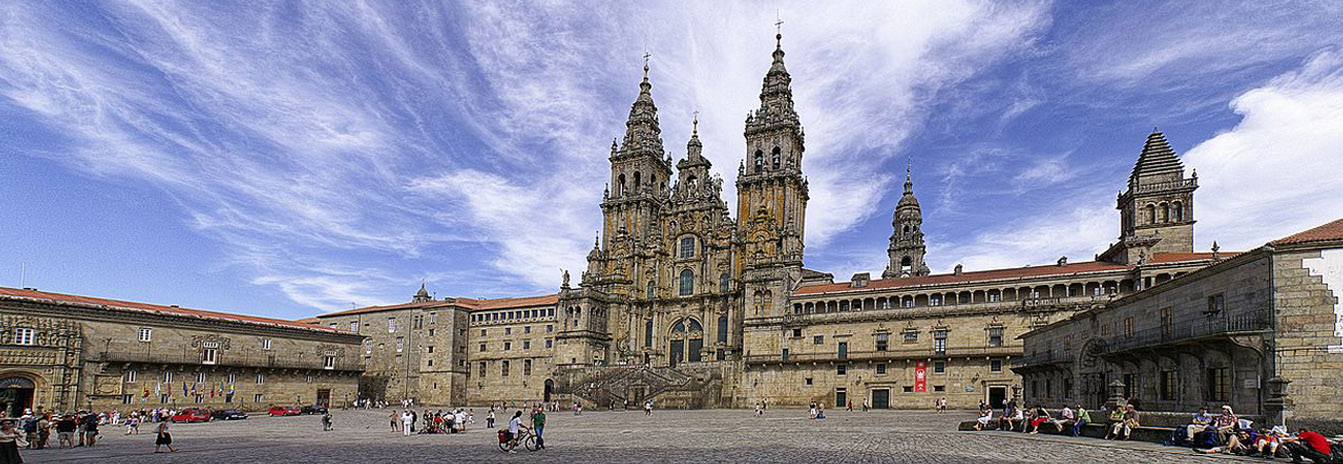The journey down this road continues to seduce the eager traveler time and again because of its religious nature, its historical continuity, its large cultural heritage ubiquitous throughout cities, towns, villages, convents, bridges and chapels. We will enjoy its varied landscapes and cultures accompanied by the perennial presence of contemporary pilgrims. Participating in mass and possibly enjoying long walks will help us better appreciate this phenomenon and understand the endurance of this centuries old tradition.
Day 1 The first route of our journey takes us to the Bilbao Airport, designed by the renown architect Calatrava, followed by another landmark of contemporary art, Frank O. Gehry’s Guggenheim Museum, the newest icon of the Basque Country’s industrial capital city. We will further explore this refurbished city with a scenic tour that takes us from the newer suburbs to the historic old town and its Seven Streets, where we will have our first encounter with the Path of Saint James while visiting the Santiago church, nowadays a Cathedral.
Travel to Logroño for overnight
Day 2 In the morning we will visit the old section of Logroño, capital city of La Rioja and shall follow in the footsteps of those who have made the pilgrimage, along the Old Route with the late Gothic church of Santiago, the Fountain of the Pilgrims and the Shelter, as well as the con-Cathedral and the church of St. Bartholomew. The Calle Mayor in Navarrete will guide us along homes and palaces, leading to the Romanesque gate of the cemetery. We will go on to Nájera, the former venue for the Kings of Navarre, some of whom are buried in the monastery of Santa Maria la Real. Our next stop will be Santo Domingo de la Calzada, a site created for those making the pilgrimage, with its walls, a beautiful Main Square, pilgrimage hospital, and its noted Romanesque-Gothic Cathedral. On our way to Burgos, we will ascend the hills to find, in the midst of nature, the late Romanesque church of San Juan de Ortega, another landmark created for and by the pilgrim.
Possibility of hiking along the Path of Saint James from Ermita de Valdefuentes to San Juan de Ortega (6,4 km) Overnight in Burgos
Day 3 Burgos welcomes us with its tale of the origins of Castile at the Renaissance gate of Santa María, with special reference to the historical figure named El Cid. We will visit the Cathedral, an outstanding example of Gothic architecture and World Heritage Site. A walk through the city will take us to the Casa del Cordón, the Main Square, the Paseo del Espolón promenade, and the Consulate. In the outskirts we will discover two great monuments: the Cistercian monastery of Las Huelgas, a royal pantheon from the 13th century; and the Cartuja de Miraflores, church and burial place for the parents of Isabella the Catholic, Queen of Castile.
Possibility of celebrating or attending Holy Mass Overnight in Burgos
Day 4 We resume our journey along the Path of Saint James in the Castilian plains as we encounter the narrow Arch of Saint Antón near Castrojeriz. Possibility of hiking along the Path of Saint James from Hontanas to Castrojeriz (9 km) Awaiting us in Frómista is the church of Saint Martin, one of the purest examples of Romanesque. A few kilometers away lies a village with an important Jacobean past: Carrión de los Condes and its two magnificent Romanesque façades in the churches of Santiago and Santa María del Camino. Sahagún will take us to the Mudéjar style brick of the church of San Tirso, while San Miguel de la Escalada represents the other medieval Arabic style from the north of Spain known as Mozárabe. Continue to León for overnight
Day 5 As one of the capitals of Medieval Spain, León offers Romanesque style works of art in painting, sculpture and architecture in San Isidoro, and one of the most important collections of stained glass in its Gothic Cathedral. We cannot leave without first contemplating the beautiful façade of the former pilgrimage hospital of San Marcos, nowadays a luxurious Parador. Our journey will take us to Astorga, another city of Roman origin, with its picture perfect Roman and Medieval city wall, its Gothic Cathedral and its Modernist Episcopal Palace, designed by famous architect Antonio Gaudí. Possibility of organizing a traditional “Maragato” lunch near Astorga In the afternoon we will traverse one of the most authentic and untouched sections of the Path of Saint James -Rabanal del Camino, Cruz de Ferro and Molinaseca- ending at Ponferrada, known for its famous castle of the Knights Templar.
Possibility of hiking along the Path of Saint James from Acebo to Molinaseca (7,6 km) Overnight in Ponferrada
Day 6 Villafranca, the ancient capital of El Bierzo offers an important urban setting in which the Romanesque church of Santiago stands out. Here is where pilgrims began their climb to O Cebreiro, the entry gate to Galicia. This hamlet surprises with its particular architecture and the legend that surrounds its humble church. Possibility of celebrating or attending Holy Mass We will continue our journey along the green countryside of Galicia until arriving at the Miño River in Portomarín, where we will discover the Romanesque church-fortress of Saint Nicholas.
Possibility of hiking along the Path of Saint James from Sarria to Mouzós (6,2 km) Overnight in Santiago
Day 7 A walk through the narrow streets of the historical district will lead us to the Cathedral of Santiago that, since its construction, has been the object of almost all the Christian pilgrimages, and the monumental Plaza del Obradoiro, surrounded by granite works of art.
Possibility of attending Pilgrims’ Holy Mass Possibility of organizing a special farewell dinner Overnight in Santiago
Day 8 Transfer to the Santiago Airport
THE PATH OF SAINT JAMES 8 DAYS:
- Day 1 BILBAO – LOGROÑO
- Day 2 LOGROÑO – NÁJERA – BURGOS
- Day 3 BURGOS
- Day 4 BURGOS – FRÓMISTA – CARRIÓN – LEÓN
- Day 5 LEÓN – ASTORGA – PONFERRADA
- Day 6 PONFERRADA – O CEBREIRO – SARRIA – PORTOMARÍN – SANTIAGO
- Day 7 SANTIAGO DE COMPOSTELA
- Day 8 SANTIAGO DE COMPOSTELA
 |
 |
 |





